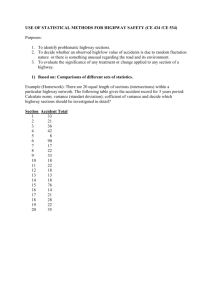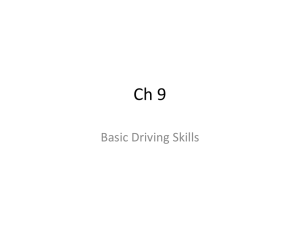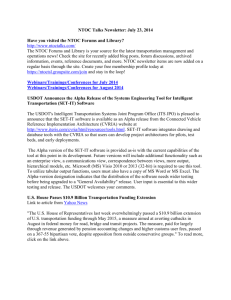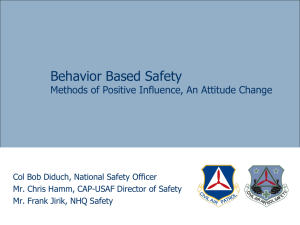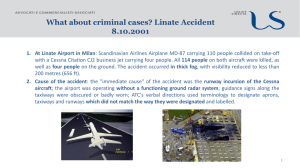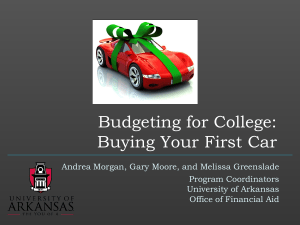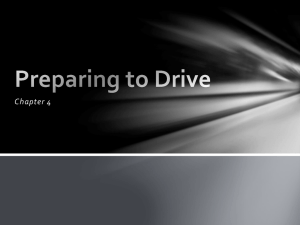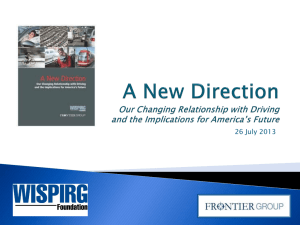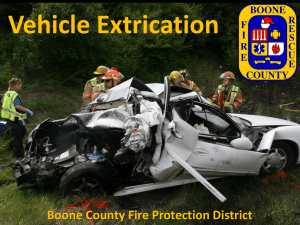Highway Codes Presentation
advertisement
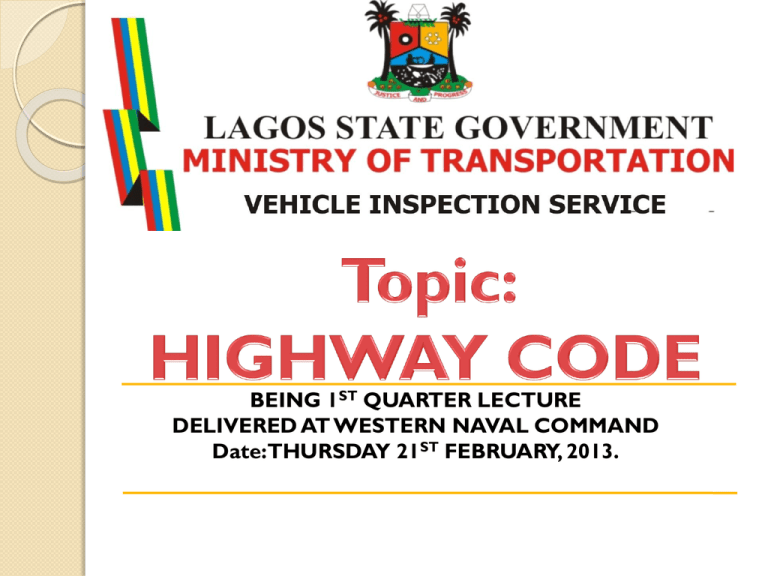
BEING 1ST QUARTER LECTURE DELIVERED AT WESTERN NAVAL COMMAND Date:THURSDAY 21ST FEBRUARY, 2013. Introduction DEFINITION OF AUTO ROAD ACCIDENT Accident is defined as an unintended and unforeseen event, usually resulting in personal injury or property damage. In law, the term is usually limited to events not involving negligence, that is, the carelessness or misconduct of a party involved, or to a loss caused by lightning, floods, or other natural events (Act of God). In popular usage, however, the term accident designates an unexpected event, especially if it causes injury or damage without reference to the negligence or fault of an individual. The basic causes of such accidents are, in general, unsafe conditions of machinery, equipment, or surroundings, and the unsafe actions of persons that are caused by ignorance or neglect of safety principles. ECONOMIC IMPORTANCE OF ROAD ACCIDENT Fatalities as a result of road accidents have become more significant in recent years. For example, in Nigeria, road accident fatalities have risen over the years, while over the same time period road accident fatalities in industrialised countries have fallen. There were some 500,000 road accident fatalities per annum, worldwide, of which around 70% occur in the developing world. Annual fatalities per registered vehicle exceed 100 in some developing countries; compared with rates less than 2 in most industrialised countries. CAUSES OF ROAD ACCIDENTS: Before accident can occur. Three (3) major components comes to play, namely: Human (Driver) Vehicle (Mechanical) Road (Environment) CAUSES OF ROAD ACCIDENTS: DRIVER: If a driver is sick, he can patronize his Doctor or take a rest in order to allow the body to be ok. CAUSES OF ROAD ACCIDENTS (cont’d) VEHICLE Significantly, a VEHICLE is made of many mechanical components which can be substituted when spoilt. More reputable mechanical workshops for auto spare parts are springing up in Lagos, even if new ones are expensive and costly. Owode Onirin and Iyana Itire are there for ‘Tokunbo’ spare parts. CAUSES OF ROAD ACCIDENTS (cont’d) ROAD ROAD is very stubborn, it has no mouth to talk, no head to think like drivers. Yes, road claims, causes fatal, auto road crashes at various locations across the country. Then and thereafter, scientific although aware that roads remain at is unlike other two (2) components i.e Driver and Vehicle. They also had it at the back of their mind that all Naval officers are Proactive and controllable in different Seas; especially they are very brilliant nautical miles calculators (officers). Others are good in their various fields or area’s of specialization. Finally, they agreed, considered that VIO/POLICE should stay permanently on the roads to prevent auto accident. HIGHWAY CODE ROAD Then, simple road signs adopted and simple classification employed based on the following configuration: Shape Colour Arrow/Direction Lane Marking HIGHWAY CODE Shape Colour Arrow/Direction Lane Marking HIGHWAY CODE Three (3) major classes of adopted traffic road signs are: Regulatory/Mandatory Warning/Danger Signs Signs Informative/Directional Signs HIGHWAY CODE Reasons for Red Colour selection Easy to see (far & near) Resemble Devil (Bad spirit) (Not Functional) Attractive/Awakening/Reflective Reasons for Green/Blue Colour Easy to see Friendly (vegetable colour) Reflecting greatly (Refractive index) HIGHWAY CODE REGULATORY SIGNS HIGHWAY CODE MANDATORY SIGNS HIGHWAY CODE DANGER SIGNS HIGHWAY CODE WARNING SIGNS HIGHWAY CODE INFORMATIVE SIGNS HIGHWAY CODE LANE MARKINGS TRAFFIC LIGHTS Red – To Stop Bring your vehicle to a complete halt behind the stop line or cross walk. TRAFFIC ROAD MARKINGS (cont’d) Broken Line (or Broken Line to the left of a Continuous line) You must keep to the left of these lines.You may cross them to overtake or make a turn, but you must only do so if it is safe. TRAFFIC ROAD MARKINGS (cont’d) Single Continuous Line A dividing line is a road marking formed by a white/yellow line or two parallel white/yellow lines (broken or continuous) designed to separate the parts of a road to be used by vehicles travelling in opposite directions. TRAFFIC ROAD MARKINGS (cont’d) Parallel Lines You must keep to the left and must not cross these lines, unless you have to avoid an obstruction. You are permitted to cross single or double continuous lines in order to avoid an obstruction. This does not include a slower moving vehicle or a vehicle stopped in a line of traffic, but may include a fallen tree, a crashed vehicle, or a car that has broken down or is illegally parked. Before crossing the line, you must have a clear view of the road ahead and it must be safe. You must also be very sure that you cross safely because the onus is on you to take the risk of danger into account. TRAFFIC ROAD MARKINGS (cont’d) Dividing Lane v/s Lane Lines A “Lane” is the space between two lines (or a line and the kerb) painted to divide the road into two or more lines of traffic travelling in the same direction. A “Laned” road therefore has at least 2 lanes. A road without marked lanes is an “Unlaned” road regardless of its width. A “Multi-lane” Road is a one-way road or a two-way road with 2 or more marked lanes that are on the side of the dividing strip or median strip (road divider) where the driver is driving and for the use of vehicles travelling in the same direction. TRAFFIC LIGHTS Amber – Caution You. If your have entered the intersection and the light turns to amber, move on very carefully. If you see the amber light before entering the crossing, stop the vehicle behind the stop line or cross walk. TRAFFIC LIGHTS Amber – Caution You. If your have entered the intersection and the light turns to amber, move on very carefully. If you see the amber light before entering the crossing, stop the vehicle behind the stop line or cross walk. TRAFFIC LIGHTS Green – To Go. Go through the crossing carefully. You can turn in the direction of the arrow by giving indicator. TRAFFIC LIGHTS Pedestrian Signals These signals help pedestrians cross intersections safely. If you face a steady red human figure, do not enter the road. Walk cautiously if you have a steady green human figure. YOUR KEYS TO SAFE DRIVING! • Good Vision: Look with your eyes but see with your mind. • Obey Traffic Laws • Proper care of your Car: Don’t depend on bi-annually or yearly inspection. • Courtesy: Safety comes before right-of-way. • Proper signaling: Failure to signal is dangerous and inconsiderate. • Physical Fitness: Let someone else take the wheel if you are not physically and mentally alert

